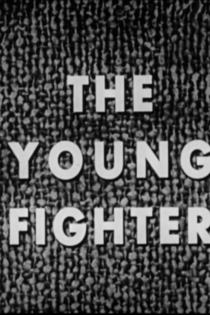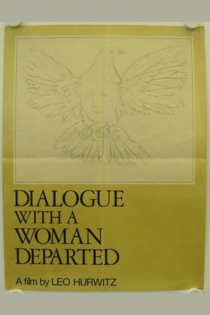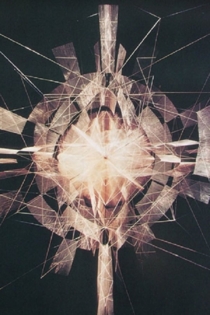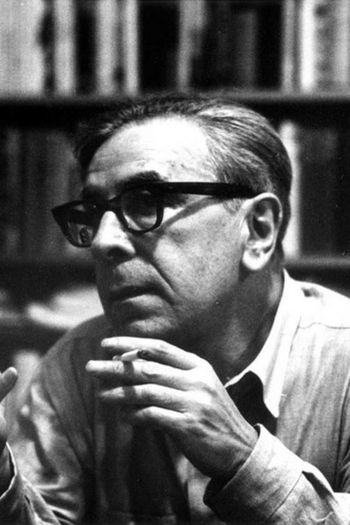
Leo Hurwitz
1909 - 1991An Essay on Death: A Memorial to John F. Kennedy
Leo Hurwitz
In 1964, National Educational Television decided to make a program as a memorial to President Kennedy. Since he had been assassinated just a year before, it seemed unnecessary to recite the events of his death again. Executive Producer, Brice Howard, discussed with Hurwitz the possibility of making a film for television that, instead of engaging the assassination head on, would deal with the inevitablity of mortality and its trauma. Essay On Death uses a story of a camping trip by a father and son to weave the thoughts about death that intercede in our everyday affairs. The commentary is made up of writings, ancient and modern, on the life and death. Beautifully realized, it succeeds at a task that mainstream television rarely attempts.
An Essay on Death: A Memorial to John F. Kennedy

The Museum and the Fury
Peggy Lawson, Leo Hurwitz
Josephine Kirk
From the perspective of the Auschwitz-Birkenau State Museum, documentary material, amongst this the freeing of the camp and the Nuremberg Trials with clips from films which were produced shortly after the war, and pictures of museum visitors are assembled into an essay about memory.
The Museum and the Fury

Here at the Water's Edge
Charles Pratt, Leo Hurwitz
Leo Hurwitz’s film, Here At The Water’s Edge, features the 1960 New York City’s waterfront. Made with photographer Charles Pratt, the film is a cinematic poem to the people who work on the water. Pratt, who largely financed the film, made it possible for Leo to use his vision as an artist and filmmaker while the blacklist still over-shadowed his life and ability to work in other areas. Here At The Water’s Edge, a film without narration, draws our attention to the often-neglected life in, on and around water – as well as bringing into view what workers on the water give us. Leo, in his own work, was always concerned with seeing what is happening in spaces in the world where others fail to look.
Here at the Water's Edge

In Search of Hart Crane
Leo Hurwitz
Gary Merrill
Produced and directed by Hurwitz for National Educational Television (precursor of PBS), Hurwitz uses biographer and Columbia professor, John Unterecker, to help him look for the poet, Hart Crane, in his work and in the memories of many of his contemporaries. In Search of Hart Crane, 1966, is one of the very first interview-driven documentaries and is still a masterpiece of the literary documentary film.
In Search of Hart Crane

Strange Victory
Leo Hurwitz
Alfred Drake, Muriel Smith
Strange Victory" is about racial bias in post World War II America. Following "Native Land" in Leo Hurwitz' filmography, it uses some of the same techniques: dramatized scenes interspersed with scenes of compilation news reel footage, and scenes of evocative imagery.
Strange Victory
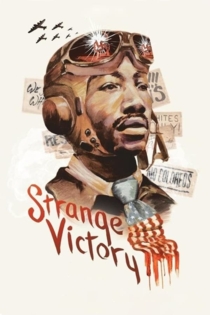
Strand, Under the Dark Cloth
John Walker
Blanche Brown, Milton Brown
Although his influence on the history of photography has been nothing short of profound, Paul Strand (1890-1976) remains a curiously shrouded and paradoxical figure. While passionately devoted to humanity, he was happiest in the isolation of the dark room. A pioneer filmmaker (Manhatta, Native Land, Heart of Spain, The Wave), he found the process of collaboration painful. Strand established himself in New York in the 1920's as a master of light and structure, with his now famous photo of Wall Street inspired by the forms and movement of European modernist painters such as Matisse and Picasso. His closeup portraits and landscapes were equally profound. John Walker's Strand.
Strand, Under the Dark Cloth

Native Land
Leo Hurwitz, Paul Strand
Paul Robeson, Fred Johnson
By the start of World War II, Paul Robeson had given up his lucrative mainstream work to participate in more socially progressive film and stage productions. Robeson committed his support to Paul Strand and Leo Hurwitz’s political semidocumentary Native Land. With Robeson’s narration and songs, this beautifully shot and edited film exposes violations of Americans’ civil liberties and is a call to action for exploited workers around the country. Scarcely shown since its debut, Native Land represents Robeson’s shift from narrative cinema to the leftist documentaries that would define the final chapter of his controversial film career.
Native Land
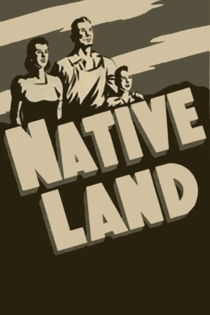
Detroit Workers News Special 1932: Ford Massacre
Leo Hurwitz
The only known film record of the mass march and meeting held in Detroit on Feb. 4, 1932, against hunger and unemployment. Also shows the dramatic demonstration by workers at the Ford auto plant in River Rouge, Michigan in March of 1932, which ended with a violent attack by Dearborn police and Ford Company guards on the crowd with clubs, tear gas and guns which killed four young men. These deaths set off a wave of protest across the country.
Detroit Workers News Special 1932: Ford Massacre

For Life, Against the War
Betty Ferguson, Peggy Lawson
First shown on January 30, 1967, FOR LIFE AGAINST THE WAR was an open-call, collective statement from American independent filmmakers disparate in style and sensibility but united by their opposition to the Vietnam War. Part of the protest festival Week of the Angry Arts, the epic compilation film incorporated minute-long segments which were sent from many corners of the country, spliced together and projected. The original presentation of the works was more of an open forum with no curation or selection, and in 2000 Anthology Film Archives preserved a print featuring around 40 films from over 60 submissions.
For Life, Against the War
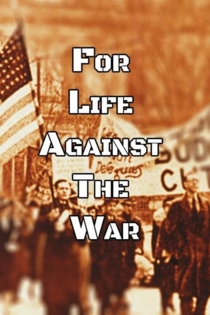
America Today
Leo Hurwitz
One of the key works in creating the American social documentary film, this 1934 newsreel compilation crams a lot of information into just 11 minutes. Skillfully edited, the picture captures a panorama of international events centered on the labor movement. Scenes include Mussolini, Hitler and FDR preparing for war, Nazi soldiers persecuting German Jews, a political strike in Paris, the Scottsboro demonstration in Washington, DC, police violence against striking steelworkers in Pennsylvania and union members stopping scab workers from delivering milk during a dairy farmers strike in Wisconsin. Under the direction of pioneering documentarian Leo Hurwitz, the images are edited together to create a powerful image of a world that, in his view, desperately needed radical change.
America Today

The Young Fighter
Leo Hurwitz
Directed by Hurwitz for the CBS Omnibus program, The Young Fighter is a moving portrait of a young boxer who faces key life decisions as he tries to balance his responsibilities to his family and to his sport. The film played an important role in the history of the documentary. It is the very first broadcast example of the technique that came to be known as cinema vérité.
The Young Fighter
